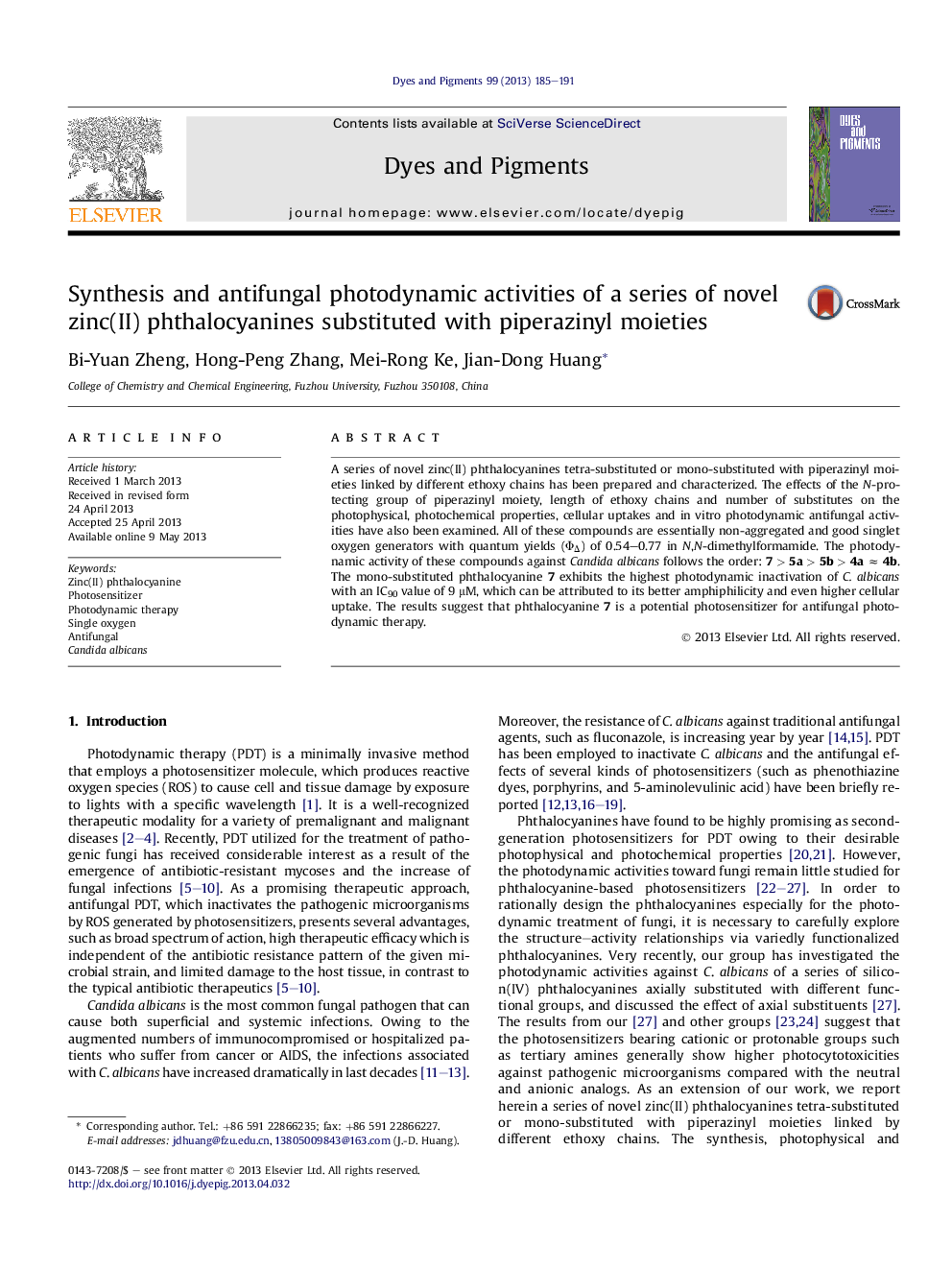| Article ID | Journal | Published Year | Pages | File Type |
|---|---|---|---|---|
| 176544 | Dyes and Pigments | 2013 | 7 Pages |
•Photodynamic inactivation of C. albicans by a series of zinc(II) phthalocyanines was studied.•The structure-activity relationship of these phthalocyanines has been discussed.•The N-protecting of piperazinyl moiety affects significantly their photodynamic activities.•The mono-substituted phthalocyanine shows the highest photocytotoxicity against C. albicans.
A series of novel zinc(II) phthalocyanines tetra-substituted or mono-substituted with piperazinyl moieties linked by different ethoxy chains has been prepared and characterized. The effects of the N-protecting group of piperazinyl moiety, length of ethoxy chains and number of substitutes on the photophysical, photochemical properties, cellular uptakes and in vitro photodynamic antifungal activities have also been examined. All of these compounds are essentially non-aggregated and good singlet oxygen generators with quantum yields (ΦΔ) of 0.54–0.77 in N,N-dimethylformamide. The photodynamic activity of these compounds against Candida albicans follows the order: 7 > 5a > 5b > 4a ≈ 4b. The mono-substituted phthalocyanine 7 exhibits the highest photodynamic inactivation of C. albicans with an IC90 value of 9 μM, which can be attributed to its better amphiphilicity and even higher cellular uptake. The results suggest that phthalocyanine 7 is a potential photosensitizer for antifungal photodynamic therapy.
Graphical abstractFigure optionsDownload full-size imageDownload as PowerPoint slide
